April 1, 2025
Plants for Earth-Friendly Gardens: New Episode!

As a new gardener, I sure could have used The Texas Native Plant Primer: 225 Plants for an Earth-Friendly Garden! Author Andrea DeLong-Amaya, Director of Horticulture at the Wildflower Center, engages us from her heart and hands-on experience with cultivation, historic use, recipes, and wildlife benefits.

In fact, on CTG’s spring premiere this week, Andrea tells us, “I looked at what I would’ve wanted to read as an early gardener; what would’ve been helpful for me? And I want people to be successful, and some traditional horticultural practices don’t really work for native plants as well.”
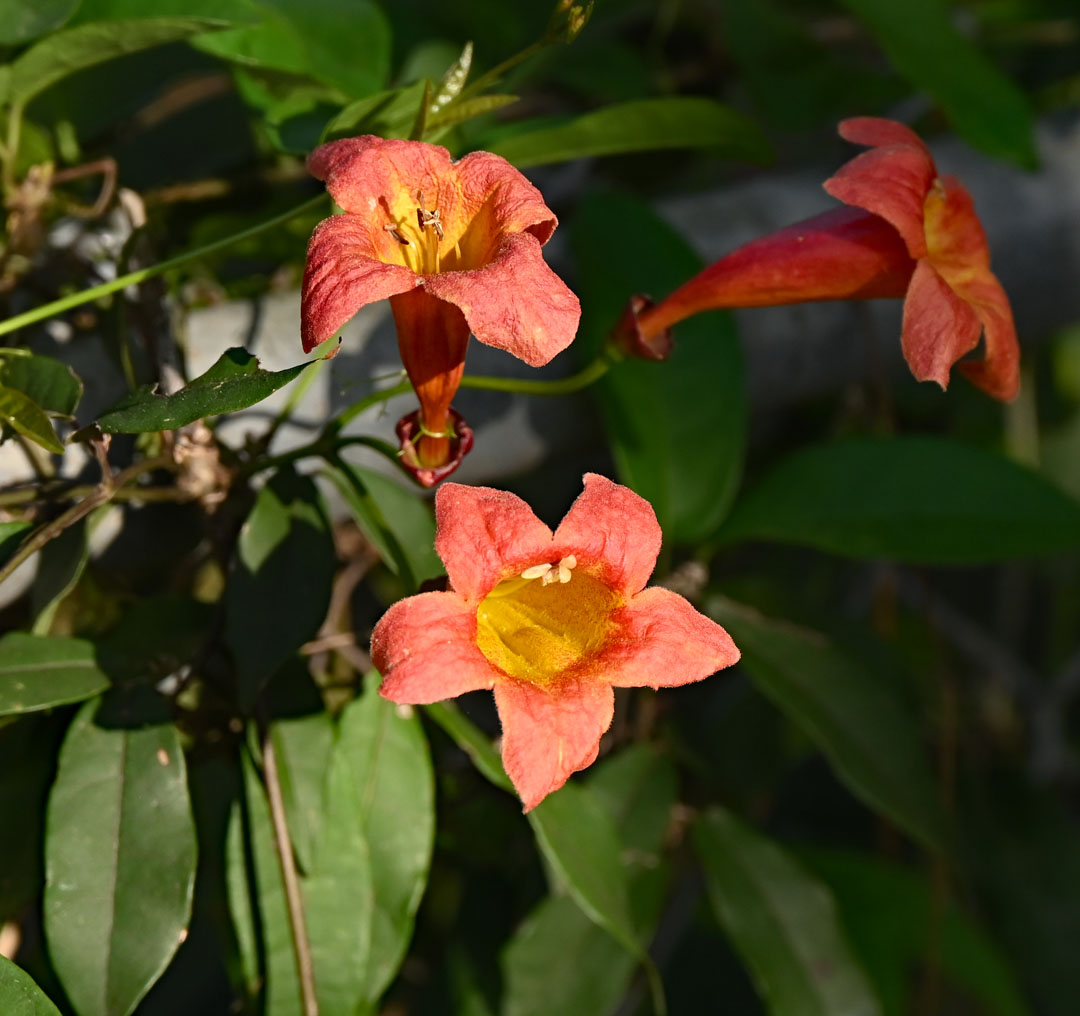
She and John Hart Asher explore what “native” actually means, especially when we’re talking about 10 ecoregions across the vast, diverse Lone Star State! To help us plant for our region, Andrea’s 225 plant profiles–from groundcovers to shade trees–list where to grow, along with soil type and other details. There’s a chapter on vines, too, including the orange-hued ‘Tangerine Dream’ crossvine, a cultivar of the native plant. And, in her easy-going style, Andrea includes how-to tips and design examples.
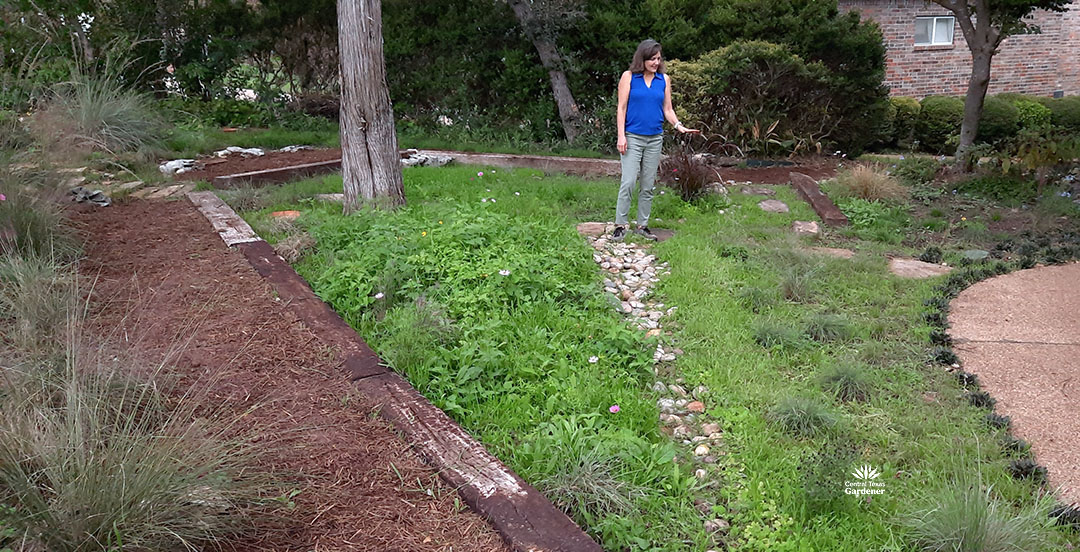
On tour, new gardener Laura O’Toole ripped out lawn for wildlife-friendly native and adapted grasses and perennials. In front, she seeded grasses—including various gramas, sand dropseed, and wildflowers.
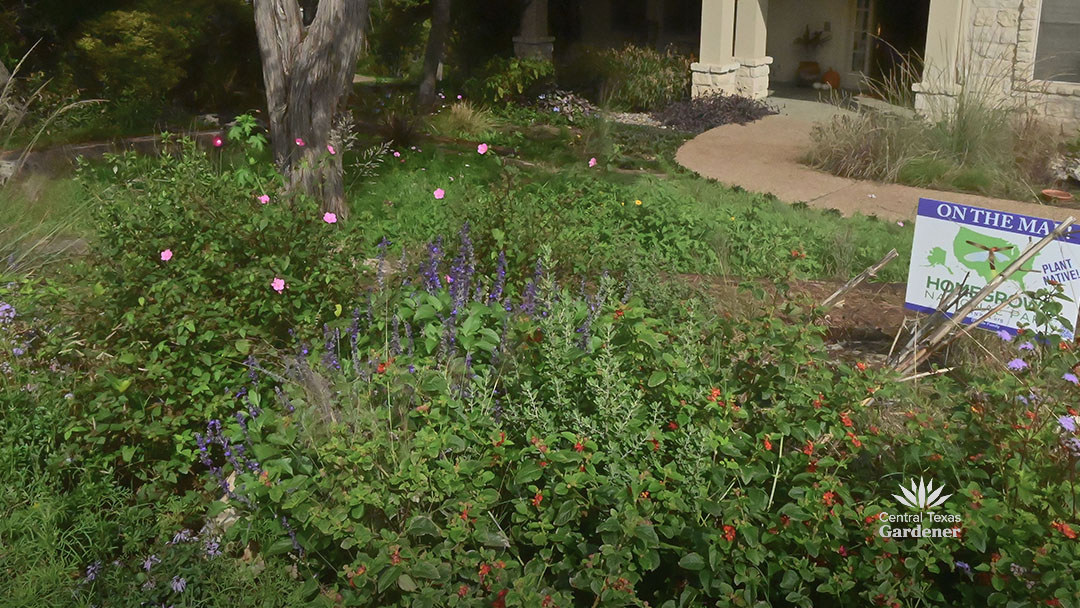
Perennials and bunch grasses won over her HOA neighbors. Her beautiful front yard inspired many of them to start their own Homegrown National Park, Doug Tallamy’s initiative to link habitat gardens from coast to coast.
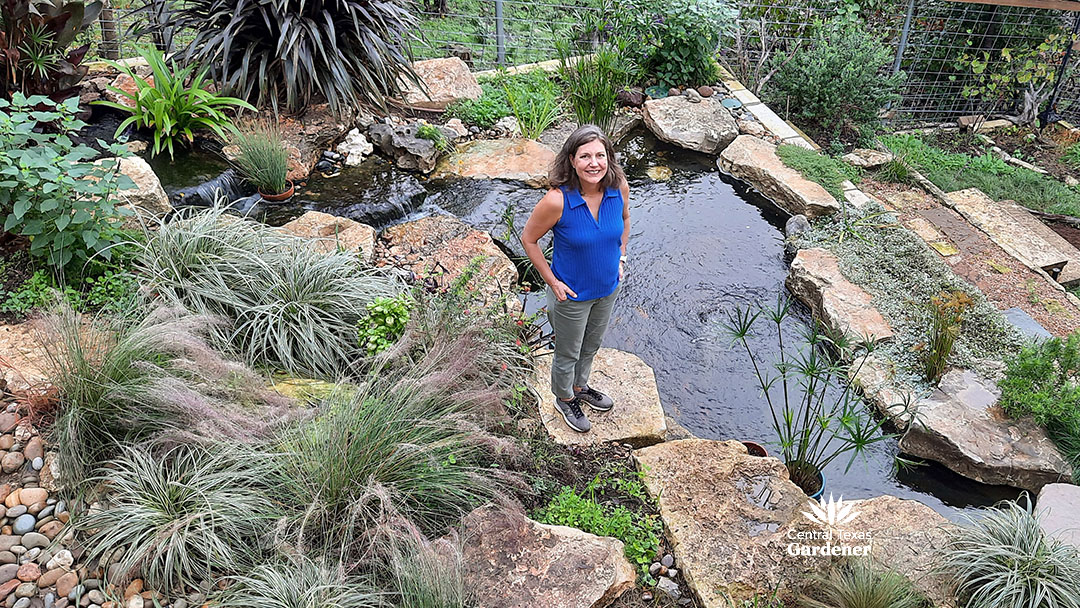
In back, a biofilter pond naturally blends into the hillside setting, a thirst-quenching wildlife waterhole.
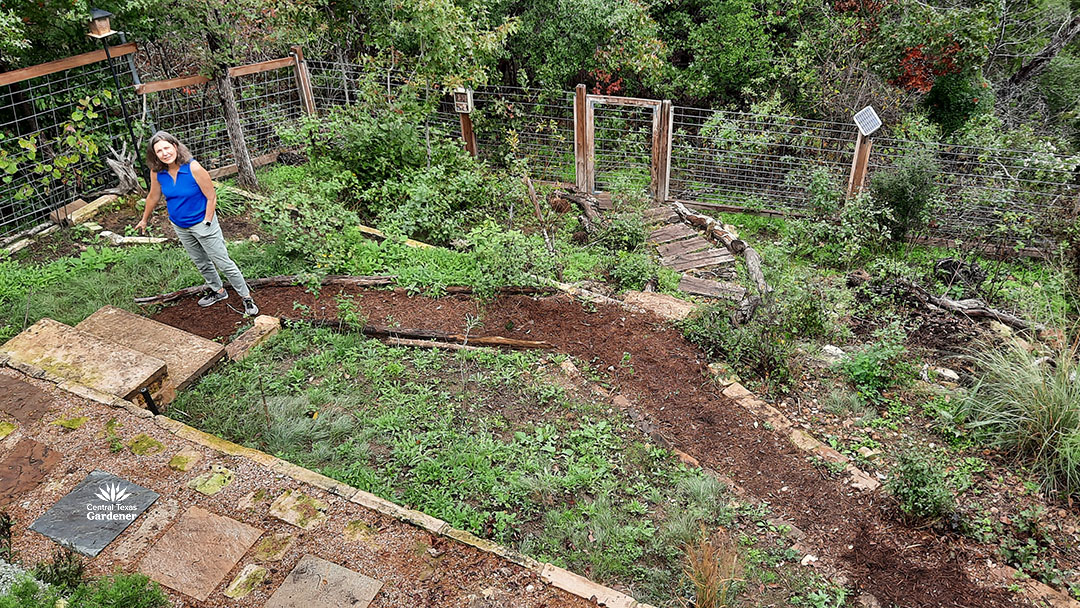
Read more and watch her story.
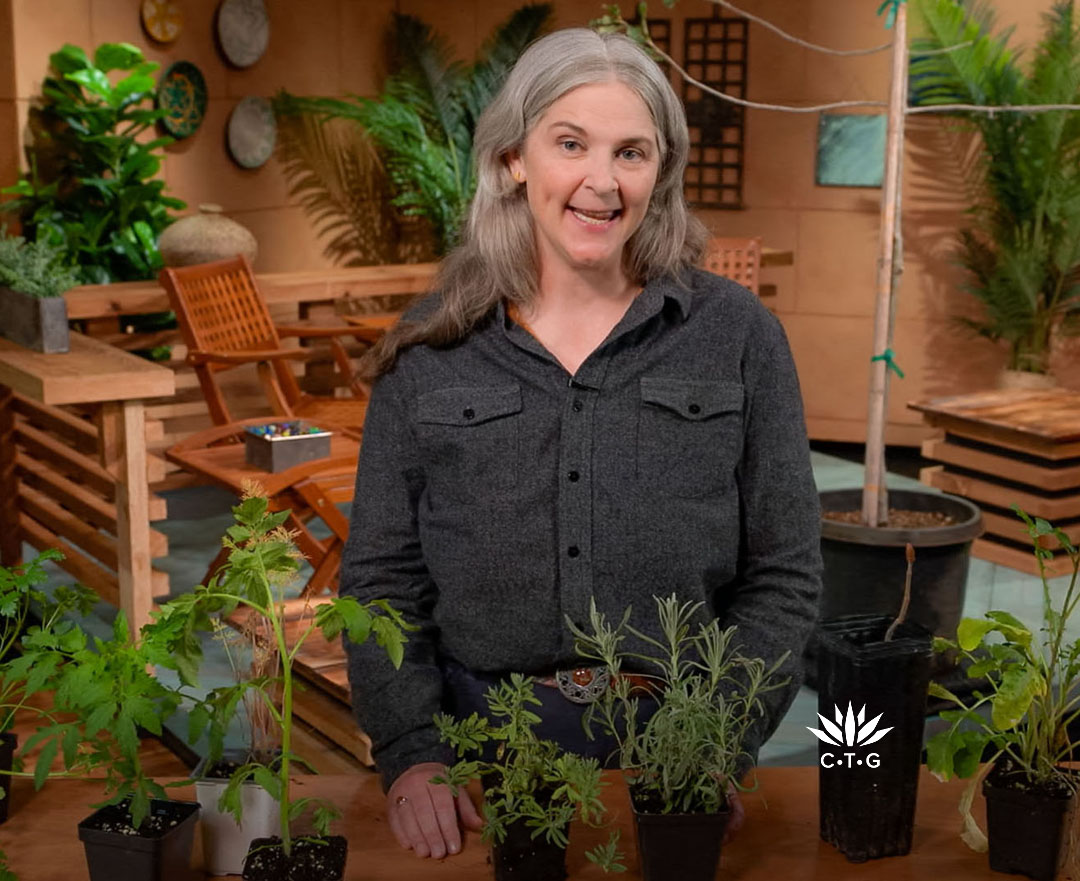
Garden success can start right at the nursery when we pick a plant out of the crowd. Sure, some of us rescue sad ones to revive them, but when we have a short window to establish healthy plants, we want to start out right. Garden consultant Colleen Dieter of ATXGardens astounded me with her eagle eye as she swooped in on common problems: size and root health, along with discolored leaves. She shows us how to spot a plant that’s been overwatered or exposed to cold.
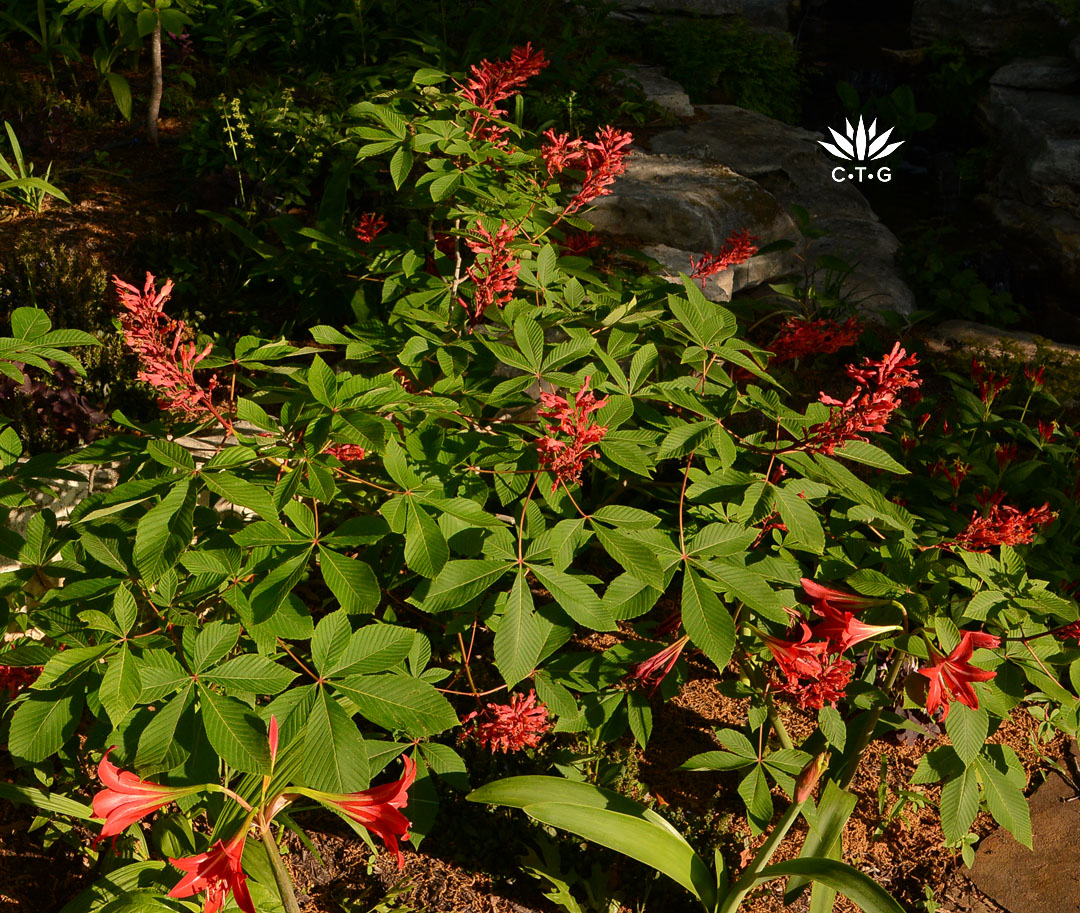
A native tree she champions is red buckeye, a part shade lover to about 15’. Right now, its hummingbird beacon flowers are in full glory. But a lot of gardeners bypass this elegant beauty since its leaves drop in summer (opposite of trees that go dormant in winter).
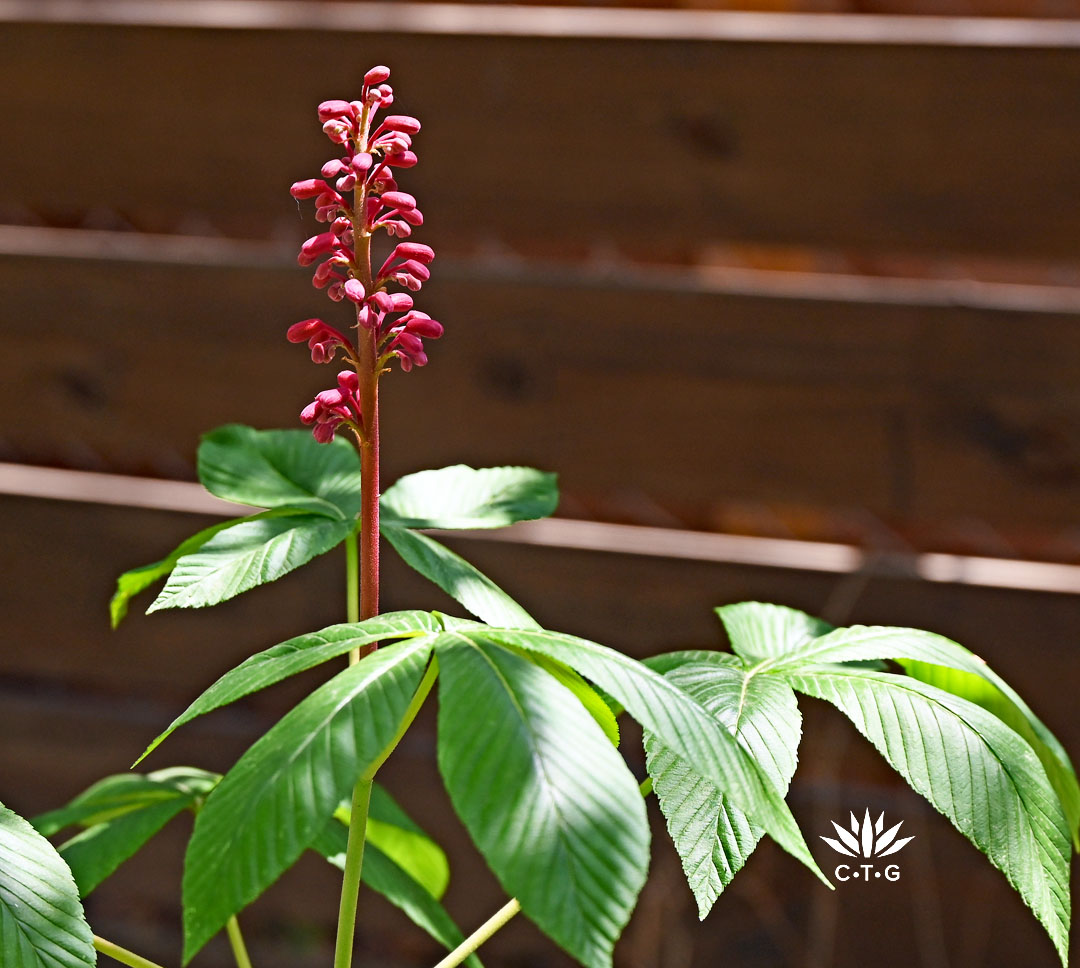
I love mine in a shady corner out the bedroom window. By the time it goes dormant, turk’s caps will have claimed attention in most of that spot, their own signature red keeping hummingbirds around.
Colleen also explains how to check a tree’s root flare to avoid early demise from girdling roots, why to remove the tape holding it to its stake.

Daphne looks at black dalea, a native perennial for dry, sunny borders. It requires little maintenance aside from late winter pruning. Last fall, Gail Smith sent us a picture of her healthy plants that had grown a little shaggy. Her soil is mostly amended clay, but that bed sits on top of a French drain surrounded by native soil and gravel.

She details what we had confirmed with Andrea: shear to a few inches from the ground in late winter.
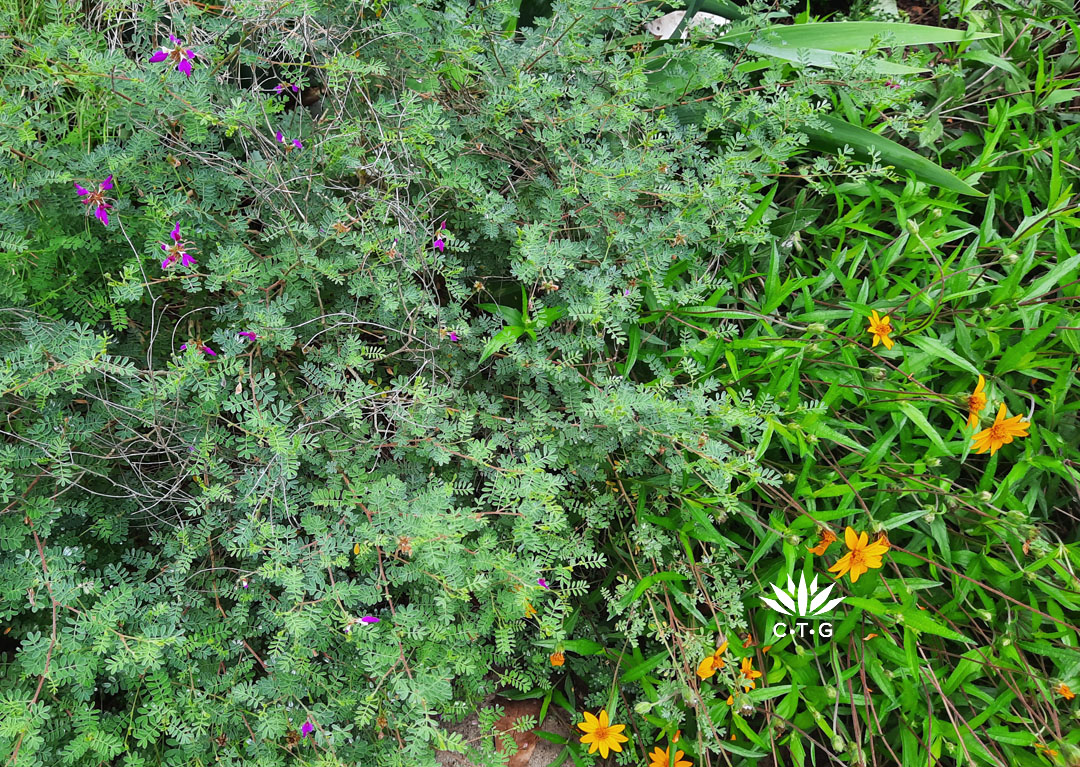
They grow to about three feet tall and attract bees and butterflies. They’re also a host plant for the Dogface butterfly. But deer will browse them, too. Here, its native complement zexmenia attracts butterflies, is a host plant for Bordered Patch Butterfly, and guarantees gleeful little birds plucking seeds.
Plus, black dalea is one of the plants that’s listed as acceptable to plant in the first 30 feet closest to the house, known as the defensible zone in firewise landscaping. Generally, plants that have a high moisture content and stems that are watery and lack resins, oils, and other volatile substances are more resistant to fire. Get resources for firewise landscaping.
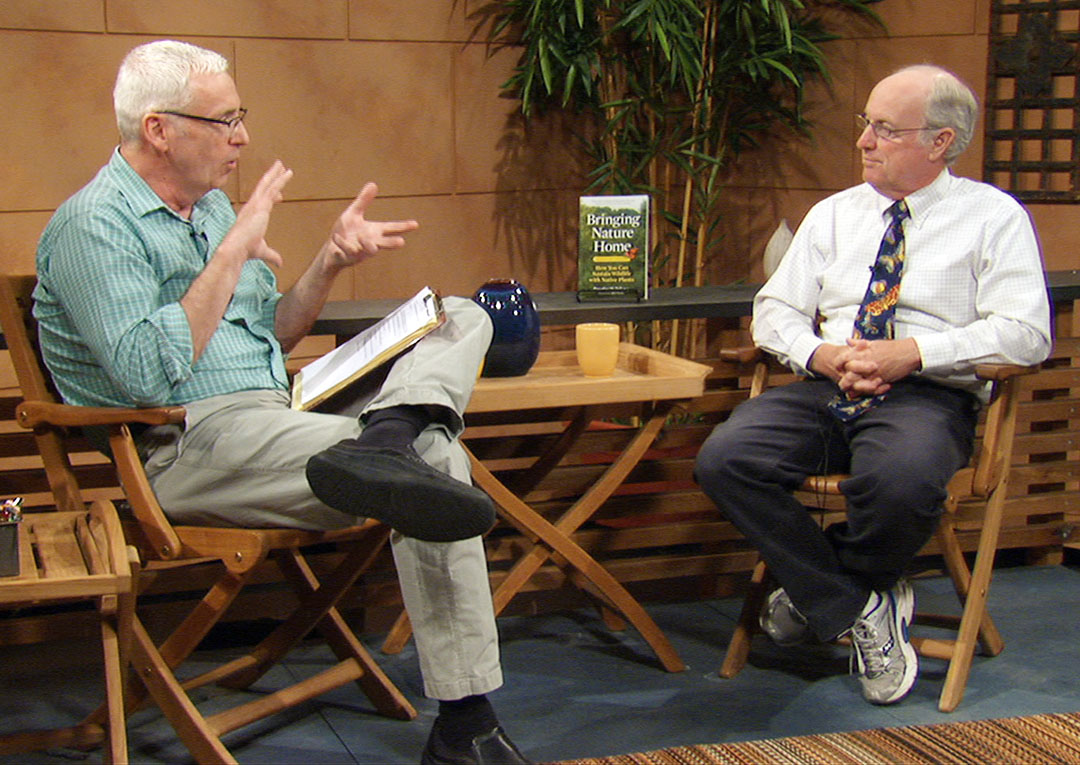
Finally, a sad note. This week, we lost our friend Tom Spencer, long-term CTG host, and host/producer of many powerful public affairs programs at Austin PBS. You may have seen some of his poignant documentaries, too, including The Painted Churches of Texas. Across many platforms and pursuits, Tom’s passionate guidance has educated and uplifted so many. With intelligence, an evil grin, and hearty laugh, he brought new goals and enlightened philosophy to our attention. In 2008, we had the great honor to meet with author Doug Tallamy and founder of the Homegrown National Park initiative.
In lieu of flowers, please make a donation in Tom’s honor to TreeFolks, P.O. Box 1395, Del Valle, Texas 78617 or Interfaith Action of Central Texas at Interfaith Austin PO Box 16170, Austin, TX, 78761-6170.
Thanks for stopping by! Next week, we explore drought-tough garden style with Karen Guz from the San Antonio Water System.

